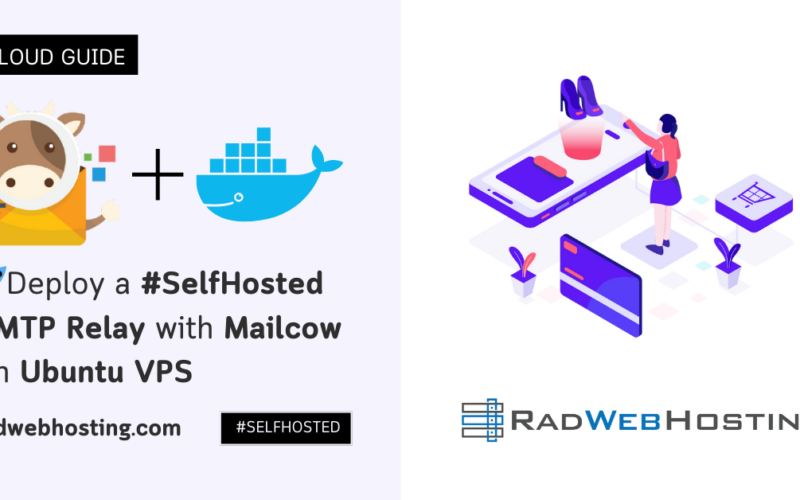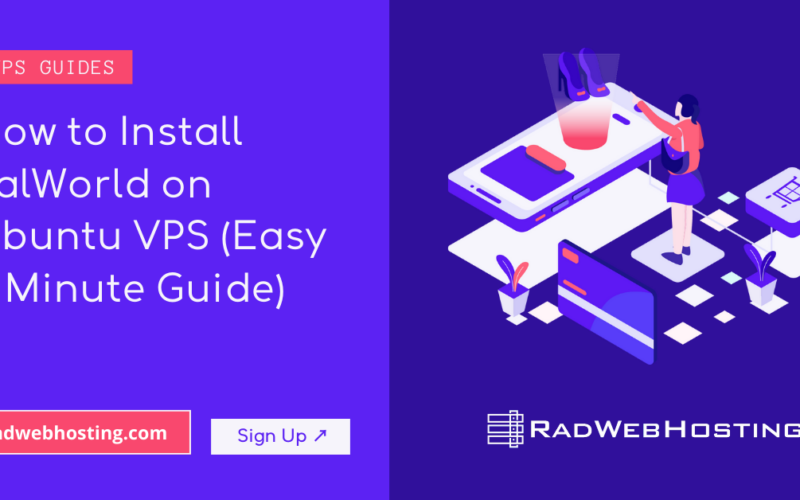
This article discusses the pros and cons of serverless app hosting vs VPS hosting.
Introduction
When hosting web applications, businesses and developers are faced with numerous hosting solutions, the most popular being Serverless hosting and Virtual Private Server (VPS) hosting. Both offer different models of infrastructure management and cost considerations.
This report provides a comprehensive analysis of the pros and cons of serverless app hosting vs VPS hosting, focusing on aspects such as financial costs, performance, scalability, security, and the level of reliance on third-party services.
Serverless App Hosting vs VPS Hosting
When considering serverless app hosting vs VPS hosting, it’s important to note some key characteristics of each:
Overview of Serverless Hosting
Serverless hosting refers to a cloud computing model where the cloud provider manages the infrastructure, automatically scales applications, and charges users based on their resource consumption. The term “serverless” is somewhat misleading, as servers are still involved, but developers are abstracted away from having to manage them.
Popular serverless providers include:
In a serverless model, you deploy code as small units (functions) that execute in response to specific triggers, such as HTTP requests, file uploads, or database events. This removes the need for managing the server and infrastructure directly.
SEE ALSO: Alternatives to Costly Cloud Service Providers
Overview of VPS Hosting
VPS hosting refers to a hosting model where a single physical server is divided into multiple virtual servers. Each VPS functions as an independent server, allowing users more control over their environment. It provides a balance between shared hosting and dedicated servers.
Popular VPS providers include:
VPS gives developers complete control over the operating system (OS), security configurations, software stack, and updates, mimicking the behavior of a dedicated server at a lower cost.
Pros and Cons of Serverless App Hosting
Pros of Serverless Hosting
- Automatic Scalability
- Serverless hosting automatically scales to handle increased traffic and demand. Developers do not need to worry about configuring or managing load balancers.
- As traffic grows, more instances of the serverless function will be spawned, and when traffic diminishes, the system scales down to zero instances.
- Cost Efficiency for Low-Traffic Applications
- Serverless platforms only charge for the actual resource consumption (compute time, memory use, etc.) rather than charging for a set amount of resources (CPU, RAM, etc.) like VPS.
- Ideal for applications with unpredictable or low traffic, as it avoids paying for idle server time.
- No Infrastructure Management
- Serverless abstracts away server management, OS patching, and hardware maintenance. This simplifies development and operations since the cloud provider manages all infrastructure tasks.
- Frees up development teams to focus on code and features instead of server maintenance.
- Event-Driven Architecture
- Serverless hosting excels in event-driven applications. It is well-suited for microservices architectures where individual services are triggered by specific events such as API calls or database changes.
- Time to Market
- Faster deployment cycles due to the minimal need for infrastructure configuration. Developers can push code to production more rapidly, leading to shorter development lifecycles.
- High Availability and Fault Tolerance
- Major serverless platforms automatically provide high availability and fault tolerance. Functions are replicated across multiple data centers, ensuring uptime even during outages or failures.
Cons of Serverless Hosting
- Cold Start Latency
- When a serverless function is invoked after a period of inactivity, there can be a “cold start” delay as the cloud provider spins up the necessary resources. This can negatively impact performance, especially for real-time applications.
- Complexity in Debugging and Monitoring
- Serverless environments are highly abstracted, making it more challenging to debug, trace, and monitor applications compared to traditional server-based environments.
- Tracking performance bottlenecks or pinpointing the root cause of an issue can be more complex due to distributed logs and asynchronous nature.
- Vendor Lock-In (Learn more)
- Serverless platforms are tightly coupled with specific cloud providers. Migrating from one provider (e.g., AWS Lambda) to another (e.g., Azure Functions) can be cumbersome and often requires rewriting parts of the codebase.
- Increased reliance on third-party services means the developer has less control over aspects like infrastructure optimizations, service availability, or changes to the platform’s offerings.
- Limited Control Over Environment
- Developers have limited control over the underlying environment, which can be an issue for applications with specific OS, networking, or configuration requirements.
- Custom configurations that might be easily applied in a VPS (such as tweaking kernel parameters or installing custom libraries) may be impossible or difficult to implement.
- Higher Costs for High Traffic or Long-Running Processes
- While serverless can be cost-effective for low traffic, it becomes expensive for applications that experience high traffic or have long-running processes.
- The pricing model (based on invocations and compute time) might lead to unforeseen spikes in costs as traffic or usage increases.
- Resource Limits
- Serverless environments have hard limits on execution time, memory, and resource usage. Long-running processes or resource-intensive applications may not be suitable for serverless hosting.
- For example, AWS Lambda limits execution to 15 minutes per invocation and has a memory limit of 10 GB, which can be restrictive.
Pros and Cons of VPS Hosting
Pros of VPS Hosting
- Full Control Over the Server Environment
- VPS gives developers root access to the server, allowing complete control over the operating system, libraries, configurations, and security settings.
- Developers can install any software or configure the environment to suit their application’s specific needs.
- Predictable Pricing
- VPS hosting typically follows a fixed pricing model based on allocated resources (CPU, RAM, storage), allowing businesses to predict hosting costs. This can be an advantage for high-traffic applications where resource needs are consistent.
- Customizable Resource Allocation
- Resources such as CPU and RAM can be configured or upgraded based on the needs of the application. This makes VPS a flexible solution for growing applications that require scaling within fixed infrastructure limits.
- Better Performance for Long-Running Applications
- VPS can handle long-running applications and continuous workloads, which serverless models may not be designed for. VPS does not impose execution time limits, making it better suited for persistent applications.
- Increased Security Control
- VPS allows administrators to fully configure firewalls, access controls, and security policies according to the organization’s specific requirements.
- Security is primarily managed in-house, reducing reliance on external vendors to protect sensitive data.
- No Vendor Lock-In
- Vendor Lock-in can be costly. With VPS, you have the flexibility to switch hosting providers or move to on-premise hosting with less friction. Unlike serverless hosting, the code and environment are largely independent of the hosting platform.
Cons of VPS Hosting
- Requires Server Management
- VPS hosting requires managing the server environment, which includes updating the OS, managing security patches, configuring networking, and handling backups.
- This requires a greater time investment and technical knowledge, potentially increasing the operational workload for developers or the need for specialized DevOps personnel.
- Manual Scalability
- Scaling a VPS is a manual process. If the application traffic grows beyond the allocated resources, you need to manually provision more servers, add load balancers, or upgrade hardware, which can lead to downtime or inefficiency.
- Compared to serverless platforms that automatically scale based on demand, this is less efficient for handling unpredictable traffic spikes.
- Idle Resource Costs
- Even if an application is not using the full capacity of the VPS, you are still charged for the allocated resources (e.g., CPU, RAM, disk). This can be wasteful for applications with highly variable or low traffic patterns.
- Lower Availability Out-of-the-Box
- VPS providers typically offer less built-in redundancy and fault tolerance than serverless platforms. While it is possible to set up failover and redundancy, it requires additional configuration, effort, and cost.
- Security Responsibility
- With great control comes great responsibility. The burden of securing the VPS environment falls entirely on the user, which increases the risk of misconfiguration and potential vulnerabilities if not managed properly.
Financial Considerations: Serverless App Hosting vs VPS Hosting
Serverless Financial Costs
- Pay-per-Usage: Serverless platforms bill based on the number of invocations, execution time, and memory usage. For applications with low or fluctuating traffic, this model can result in significant cost savings.
- Potential Cost Spikes: For high-traffic or long-running applications, serverless hosting can become expensive due to the pricing structure based on resource usage. Sudden traffic surges can result in unexpected spikes in costs.
- Overhead Savings: Serverless removes the need for server maintenance and operations costs, potentially reducing the need for a dedicated infrastructure or DevOps team.
VPS Financial Costs
- Fixed Pricing: VPS pricing is typically fixed based on the allocated resources (CPU, RAM, and storage). This can offer predictable monthly costs, making it easier for businesses to budget hosting expenses.
- Idle Resource Waste: Businesses pay for the allocated resources even if they are not fully utilized, which can be inefficient for applications with low or inconsistent traffic.
- Management Overhead: VPS hosting may require hiring additional personnel or investing in tools for server management, updates, and security.
Comparison: Serverless App Hosting vs VPS Hosting
| Feature | Serverless Hosting | VPS Hosting |
|---|---|---|
| Scalability | Automatic scaling with traffic; no manual intervention required. | Manual scaling; requires reconfiguring server resources. |
| Cost Model | Pay-per-use based on invocations and compute time. | Fixed pricing based on allocated resources, regardless of usage. |
| Performance for High Traffic | May experience cold start latency; potential high costs with high traffic. | Stable performance for high traffic with pre-configured resources. |
| Control Over Environment | Limited control; infrastructure managed by the provider. | Full control over the OS, security settings, and software. |
| Resource Limits | Execution time limits, memory limits, etc. | No hard limits on execution time or processes. |
| Security | Security largely managed by the cloud provider. | Custom security management by the user, offering more control but also more responsibility. |
| Maintenance | No server management required, handled by the provider. | Requires manual server management and updates. |
| Time to Market | Faster due to minimal setup and infrastructure management. | Slower due to the need to configure and manage the server environment. |
| Vendor Lock-In | High potential for vendor lock-in with cloud providers. | Low; more flexible to switch providers or move to on-premise hosting. |
| Best for | Applications with variable traffic, event-driven systems, and low operational overhead. | Long-running applications with consistent traffic and specific configuration needs. |
Conclusion
Both serverless hosting and VPS hosting offer distinct advantages and disadvantages, depending on the use case and business requirements.
- Serverless is ideal for applications that need to scale dynamically, have variable or event-driven traffic, and require fast time-to-market with minimal infrastructure overhead. However, it can lead to high costs for long-running or high-traffic applications and introduces complexity in debugging and vendor lock-in.
- VPS offers more control over the server environment, predictable pricing, and is better suited for applications with steady traffic and long-running processes. However, it requires more manual management, has less built-in scalability, and can result in under-utilized resources.
Ultimately, serverless app hosting vs VPS hosting depends on factors such as traffic patterns, application architecture, developer expertise, budget, and operational priorities. For many businesses, a hybrid approach—leveraging both serverless and VPS hosting—can provide the best of both worlds, balancing cost, control, and scalability.










[…] SEE ALSO: Pros and Cons of Serverless App Hosting vs VPS Hosting […]